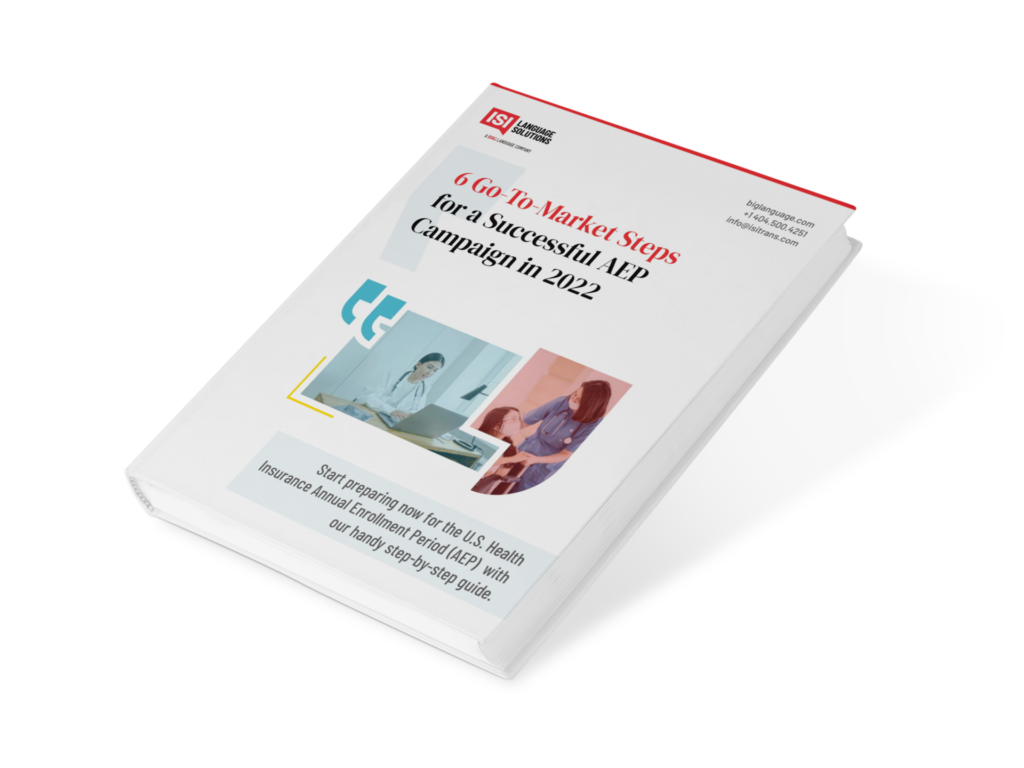56 million people in the United States consider themselves Hispanic, representing the largest minority group in the United States and $1.7 Trillion in purchasing power. With a tradition of community-based medical care in many Hispanic communities, it is important for healthcare providers to be connected and highly involved with their patients if they want to attract and retain members of the Hispanic community. To this end, healthcare providers need to offer the Marketing Community, materials in both English and Spanish allowing for a more comprehensive understanding of medical terminology and recommendations.
Ten Tips for Making Your Marketing Effective
- Remember that Hispanic and Latino aren’t synonyms (Hispanic refers to the geographic area of Hispaniola an area encompassing Spain and is a universal term for all people of Spanish descent, Latino refers to the location of Latin America), so focus your marketing on the way your potential clients actually describe themselves.
- In your healthcare market, there may be multiple forms of Spanish spoken, including dialects from different countries and regions. For example within the US: Miami is heavily influenced by Cuban Spanish, New York is heavily influenced by Puerto Rican Spanish and California is heavily influenced by Mexican Spanish. Partner with your language services provider to better understand which regionalisms will be most recognizable and valued to your target market.
- The deeper you get into your market research, the more you’ll recognize that the Spanish-speaking community isn’t just one group; they are many groups! Holding community based focus groups, for example an OB-GYN speaking to expectant parents, you can learn a lot about what the people in your community are looking for from their healthcare providers.
- Recognize that the Hispanic population in the United States skews young, and that a large percentage of those young people access the internet from mobile devices. If your website isn’t optimized for mobile, it could be reducing your marketing reach.
- Consider how you want to incorporate Spanish in all parts of your marketing plan; make sure that Spanish translation options are prominently available in your phone tree, on your social media sites, and on the landing page of your website.
- Be conscious about representation in your photographs and video; people like to see others who look like them in the marketing materials for the organizations they work with. Use pictures of extended friends and family that reflect the Hispanic community This goes for other things you might not expect; using Spanish-influenced music in your ads could be helpful, as long as it is subtle.
- Reach out to Hispanic-serving non-profits in your area. Are they having health fairs, block parties, or other events that you can be a part of? A big part of marketing is finding organizations that are already trusted members of the local Hispanic community and getting your name out there. This can also require a lot of face-to-face time, but don’t think of it as single interactions: every person who has a positive experience with you will also be sharing this with friends and family.
- Similarly, consider if there are Hispanic business networking events or economic development groups; you may find that there are already businesses that would love to collaborate with you in order to reach a wider audience.
- Marketing efforts cannot exist in a vacuum; make sure that cultural diversity training for all of your staff is available and maybe even mandatory. All the marketing in the world won’t work if people don’t feel comfortable in your offices.
- Recognize that providing translations alone may not be enough to make people feel included and welcomed into your healthcare offices. Make the extra effort to find out what are the missing links between your potential Hispanic patients and your offices.
ISI’s Value for Healthcare Marketing
When you put the time and energy into creating excellent marketing materials for Hispanic consumers, those materials create warm and positive connections between your healthcare provider and Spanish-speaking individuals. ISI Language Solutions offers high-quality translations that can be tailored to regional distinctions in Spanish, giving you more flexibility for personalizing your campaigns and marketing copy to the individuals you wish to reach.
If you’d like a free consultation on your target markets based in the US please do not hesitate to reach out to us at sales@isitrans.com.







